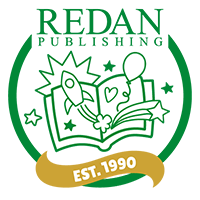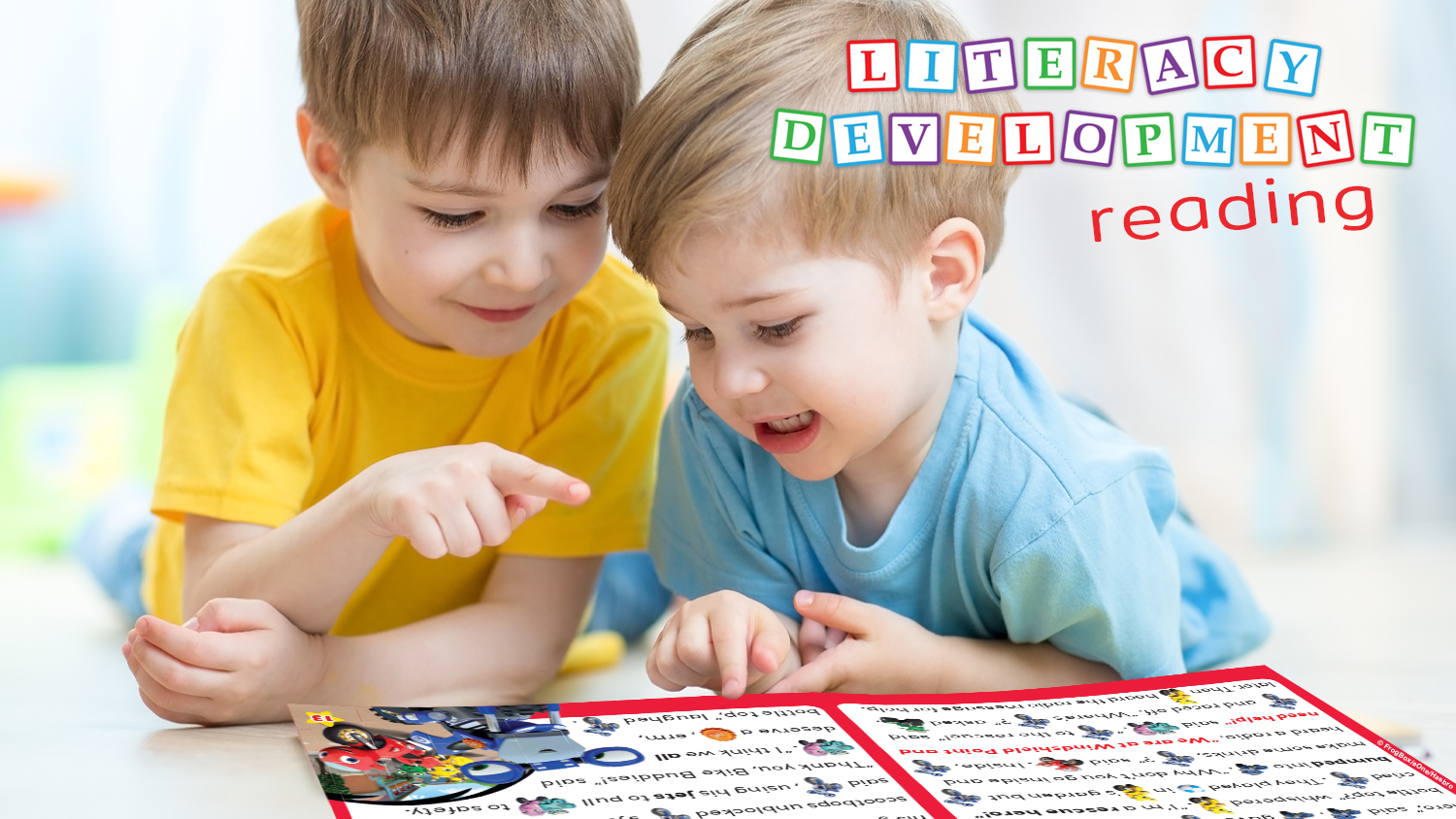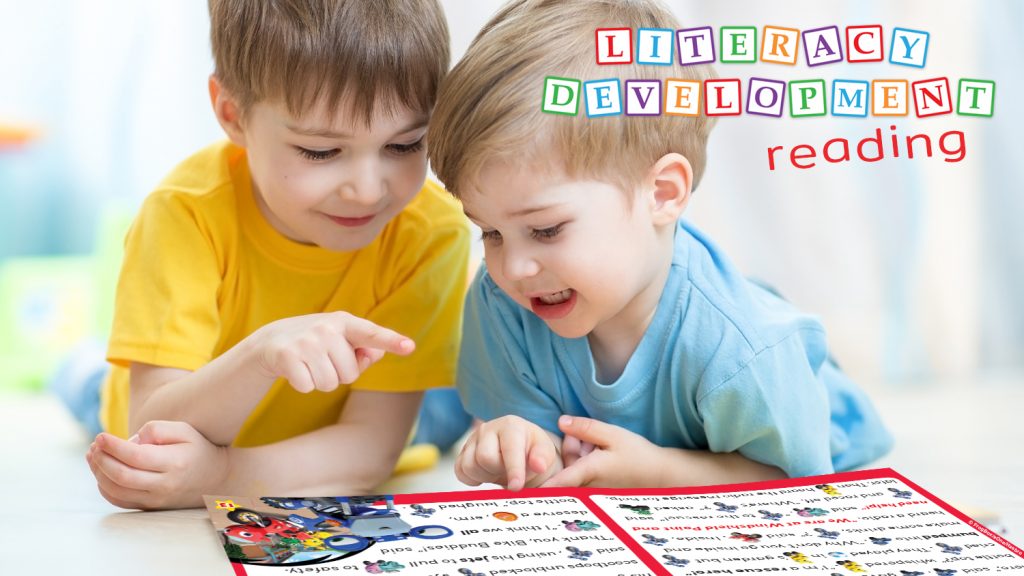
The Beautiful Early Years!
Key Area No.2: Literacy Development – Reading
‘The more you read the more things you will know and the more that you learn, the more places you’ll go.’ Dr Seuss
The importance of learning to read is undeniable. This fundamental skill aids our understanding of the world and ignites creativity, curiosity and imagination. It provides opportunities to share experiences, develop empathy and succeed. However, English is one of the most complex languages in the world. So how do we begin to open this life changing skill to our small people?
As a parent, the ‘learning to read’ journey can induce anxiety. Here is what to expect from early reading development in the Early Years Foundation Stage and ideas for how you can support this with help from Redan’s magazines to make learning fun.
Reading in the Early Years Curriculum
The Early Years Foundation Stage curriculum is carefully constructed to reflect children’s natural developmental stages. At this age range, reading consists of two dimensions; language comprehension and word reading.
Word reading is a process of decoding a string of letters and sounds. This is complicated by the fact that in English, identical letter combinations can make different sounds. For example, in ‘work’ and ‘fork’, the ‘or’ makes different sounds.
Thankfully, our language does have enough similarities that we can teach in a systematic way to support reading, which will be referred to in preschool and school settings as phonics. Also, words which are harder to ‘sound out’ (known as common exception words) can be learned by sight, such as, ‘the’.
Reading Comprehension is the process of understanding that words, then print, have meaning. From birth, this starts with words as communication, singing and rhymes. This continues as children grow by having conversations, sharing stories and seeing the meaning that text adds to the world around them.
Reading at home
Even tiny babies love to hear stories and sharing stories together all the way through childhood develops family bonds and fosters a love of reading. I used to love reading to my babies as it enabled me to talk to them without having to tax my tired brain too much. There is also significant research which shows the importance of songs for developing strong readers. Develop a repertoire of songs that you regularly sing together – including actions to those songs is even better and more fun!
As children begin to grow, ensure books are accessible, always at child height. Daily story times at all ages are invaluable. If your child is not showing a natural interest in books, it might be that the texts need to be more in line with their interest. Go to a library and allow them to explore based on their interests. For example, my daughter loved diggers and loved books related to vehicles.
When reading, chat about the story and the pictures. Begin to occasionally track the text with your finger so that children can begin to understand basics such as tracking words from left to right and the concept of text having meaning.
Children LOVE to read books over and over. Repetition is so valuable as it supports vocabulary development, learning about the world, about themselves and play. Children also LOVE books with familiar characters whom they feel they know. The Redan magazines are fantastic for supporting reading with children’s much-loved TV and book characters.
Sticker Stories are great for getting children involved in stories. Grown-ups can point out words so children can find the matching stickers. This will help them begin to identify words based on the characters and objects on the stickers. ‘Peppa and George’s Day at the Playground’ is a great example from Fun To Learn Friends.
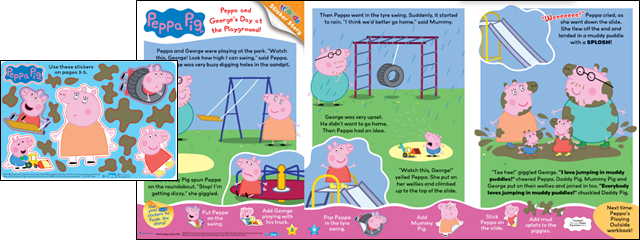
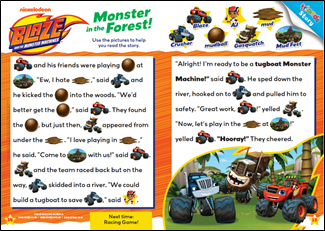 Rebus Stories are wonderful for encouraging children to join in with reading a story before they can fully identify words. It also promotes basic reading technique of following the words across the page. Rather than read the word, children say what the picture is.
Rebus Stories are wonderful for encouraging children to join in with reading a story before they can fully identify words. It also promotes basic reading technique of following the words across the page. Rather than read the word, children say what the picture is.
The Blaze ‘Monster in the Forest!’ story from Fun To Learn Friends demonstrates this approach.
Letters as symbols
Early Years settings develop word reading skills through phonics and direct teaching. This begins by hearing sounds in the environment, making different sounds, beginning to recognise letters in names, and then teaching sets of simple sounds to enable early reading.
As a parent, you can support this work by pointing out print in the environment. This extends children’s understanding that text carries meaning. Read words such as street names, shop names, brand names…the opportunities are endless. The Redan magazines help you to support this work of hearing sounds.
There are specific Sound pages in the workbooks that help teach the sounds that letters make. Children are encouraged to mimic their grown-ups making the sound and apply the same sound to the pictures on the page. Here are some examples from recent Fun To Learn Favourites and Fun To Learn Friends magazines.
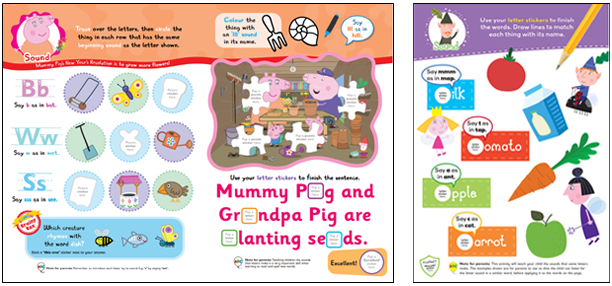
Reading for pleasure…
Reading should be a pleasurable experience, a special, sacred time. As your child begins the formal process of learning to read, their school may give them books and sounds to read and practice with at home. Keep everything positive. Rather than, ‘we have to…’, try ‘I am so excited to…’, ‘I want to…’ when referring to these activities. If there is resistance, don’t push it but do always keep enjoying books together. Learning to read takes time and the process should encourage a love of reading…
Rachel x
This Blog series looks at the 7 key areas of learning in the Early Years Foundation Stage and links activities featured in our Fun To Learn magazine range that will help support this development.
Images: © Shutterstock | © Redan
Sample Page Images: © ABD/eOne/Hasbro | © Viacom | © 2022 The Elf Factory Ltd/Ent. One UK Ltd/Hasbro.
